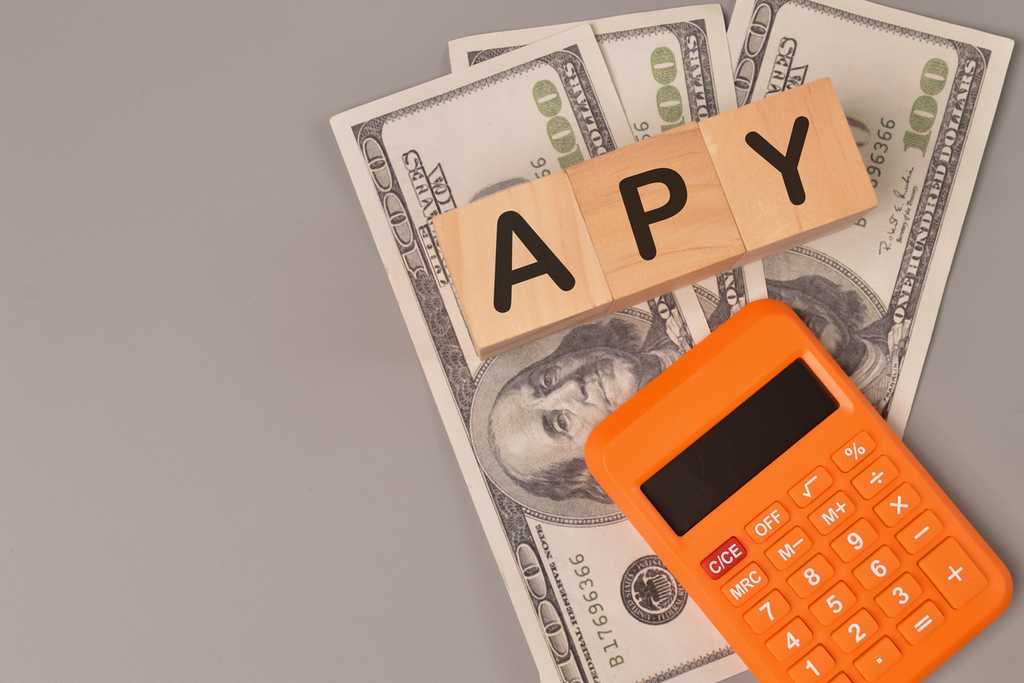APY stands for average percentage yield. APY is the annual return on money held in a bank account. It represents what your rate of return you will earn in a year including compound interest.
What Is Annual Percentage Yield (APY)?
APY reflects the amount of interest earned on a bank savings account or other interest bearing account. The APY includes the stated interest rate plus any compound interest earned as well. Compound interest is what makes APY different from the stated interest rate on a bank account. When interest compounds, you are effectively earning interest on the interest already paid into the account.
If the compounding period is daily, monthly or quarterly then the APY will include any compound interest during the year. APY is the stated interest rate on the account plus the return added during the year by any compounding of interest.
How to Calculate APY
The formula to calculate APY is:
The more frequent the compounding period during the year, the higher the APY. An account that is compounded monthly will have a higher APY than one that is compounded annually. The variance often isn’t that great. For example, a savings account paying an interest rate of 5% would have an APY of 5.12% if this interest was compounded monthly, the APY would be slightly higher at 5.13% if the compounding occurred daily.
A financial institution will provide you with the APY for the account. You can then use this to compare APYs on similar accounts among various banks and financial institutions that you might be considering.
APY & compound interest
Compound interest is essentially earning interest on interest. The initial amount deposited into the account will earn interest. The interest earned is deposited into the account by the bank or credit union. Any interest earned subsequent to this is paid not only on the original amount deposited into the account, but also on the interest that has been earned and added to the money already in the account.
In the shorter term, compound interest won’t have much of an impact on the value of your account over six months or a year. But over a longer period of time the impact of compounding can add up. The impact of compounding will increase if rates go up.
For an example of the impact of compounding, let’s look at this example of an account with a 3% APY.
| Year | Beginning balance | Interest earned | Ending balance |
|---|---|---|---|
1 | $10,000.00 | $300.00 | $10,300.00 |
2 | $10,300.00 | $309.00 | $10,609.00 |
3 | $10,609.00 | $318.27 | $10,927.27 |
4 | $10,927.27 | $327.82 | $11,255.09 |
5 | $11,255.09 | $337.66 | $11,592.75 |
By earning interest on the interest earned each year, the value of the account has increased by 15.9% over this five-year period.
APY Fixed vs. Variable
Whether the APY on your account is fixed or variable depends on the type of account. The APY on a CD will be fixed for the term of the CD. The APY for a savings account, an interest bearing checking account or a money market account will be variable. The APY will change up or down based on changes in market conditions and the APY offered by competitors.
Recently, the Federal Reserve raised the Fed Funds rate by 25 basis points (0.25%). This was the first time the Fed raised rates since 2018. Experts expect that this is only an initial increase and that the Fed will continue to push rates higher in the coming months. The result will be an increase on the cost of borrowing as well as the rates banks and financial institutions will have to pay on interest bearing accounts. Expect to see an increase in the APY on these types of accounts.
What Is the Difference Between APY and APR?
Annual percentage rate (APR) is how much it costs the consumer to borrow money over an annual period. APR is the interest rate reflected on a loan plus some fees. Whereas APR is interest that you will pay, APY is interest that you will earn on a savings account or other interest-bearing bank account.
APY reflects the stated interest rate on the account plus the impact of any compounding of interest over the period of one year.
APR reflects any fees the borrower will pay on the loan over the period of one year, including interest costs and any fees connected with the loan. There is no compounding associated with APR.
What Is Considered a Good APY?
What is considered a good APY? The answer is: it depends. In order to find out, you have to do your research and learn what various financial institutions are offering for the type of account you are considering. APYs for CDs will differ from those on a savings account. High yield savings account APYs will differ as well.
In many cases, an online bank will offer better rates than a brick and mortar institution. The APY is an important factor, but you will also want to be sure you understand any rules associated with the account. For a savings account, questions you want to know the answers to include how easy is it to access your money if needed, and are there limits as to how often you can withdraw funds? In the case of a CD be sure you understand how long the term of the CD runs for and what the penalties for early withdrawal are.
APY is a tool you use to compare two or more savings options. APY is a starting point, but be sure to review all of the details of each account to ensure that you make the best choice for your needs.

